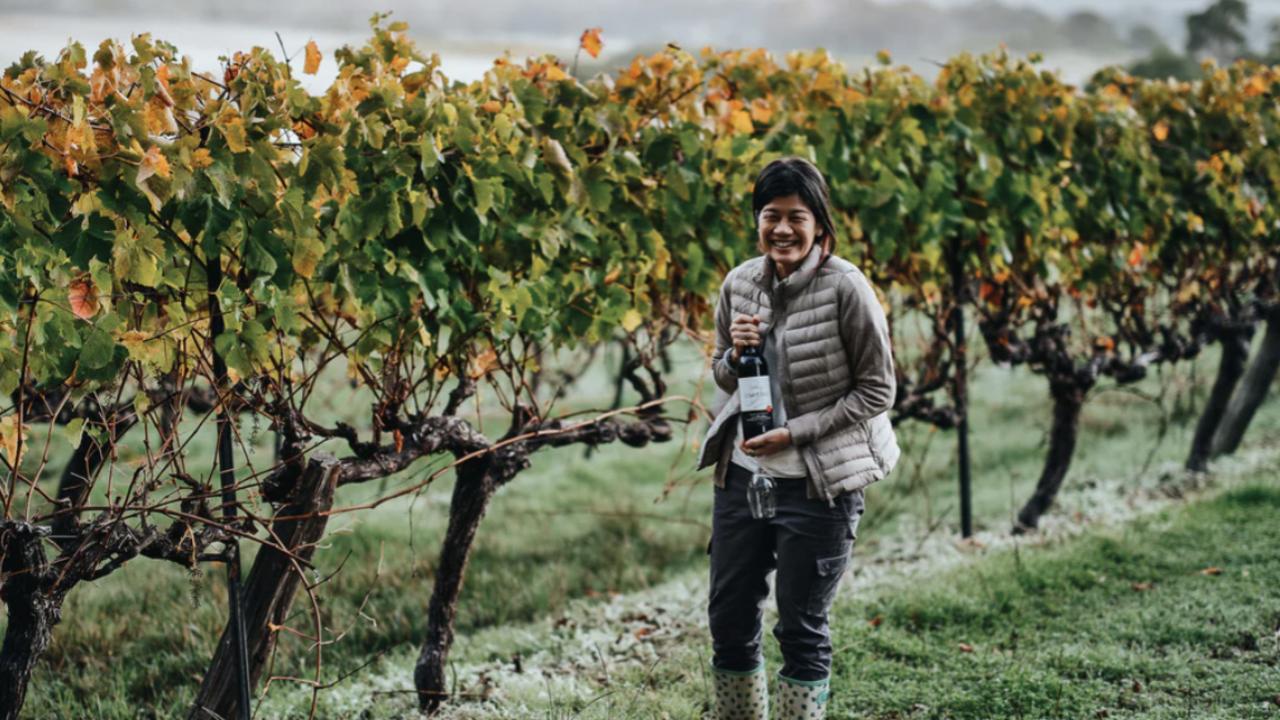The Henschke Hill of Grace 2015 is the stunning product of a ‘Goldilocks’ season
Would you shell out $800 for a bottle of wine right now? Plenty will for possibly the best vintage this famous Barossa family has seen, says our wine writer.
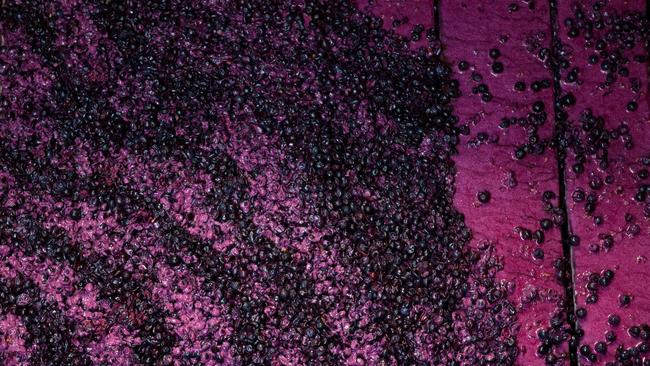
Of all its multitudinous wonders, it is wine’s ability to open a portal through time that intrigues us most. Stephen and Prue Henschke are trapped in a little box on my laptop, like General Zod and his cronies at the start of Superman II. We’re Zooming while sitting still.
As they taste the latest release of the most celebrated wine to carry their name, I can see the smiles that spread on their faces and watch them tumble back through time, from the isolated tail-end of the most bizarre vintage we’ll ever see, all the way back to a season of abundant blessings.
The year 2015 is one that would be recalled fondly by South Australian winemakers in any circumstances, but reflecting on it now, through the cracked and smeared lens of the 2020 season already blighted by minuscule crop loads and sustained drought even before the first Wuhan bat was popped in a pot, it’s reasonable to ask if it was all just a beautiful dream.
Up in the Eden Valley, where the Henschke family has made wine for more than 150 years, a classically wet winter and a dry and gentle spring set the foundations for a great vintage.

A moderate summer, the coolest January in 11 years, some well- timed rain and mild conditions through the crucial weeks of February and March delivered exceptional fruit on the venerable old vineyard that sits beneath the spire of the Gnadenberg church.
Stephen’s father, Cyril, translated the name of the church when he released the first single vineyard wine from that site back in 1958. He called it Hill of Grace.
Stephen Henschke describes the conditions shaping the 2015 vintage as “a picture-book season, the Goldilocks vintage where everything was just right”.
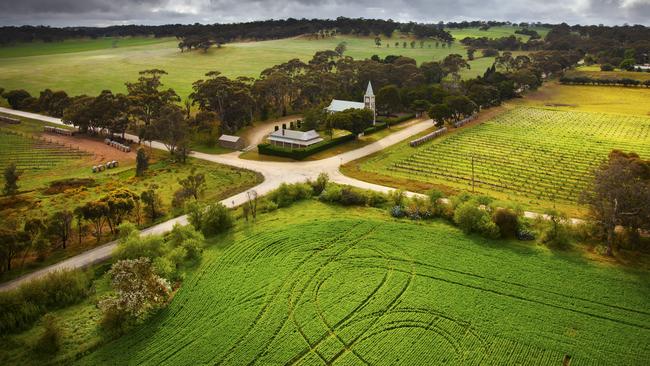
“It was just the perfect conditions for making reds, and you can already see, even as young wines, beautiful balance and fragrance that jumps out of the glass,” he says. It’s the kind of season that Henschke thinks could turn out to be the best Hill of Grace he has made. Although “made” is not really the right word. And it’s not one Stephen Henschke is comfortable using. He gives much of the credit to Prue and her fastidious and studious care of the venerable old vineyard, and he also acknowledges the preceding generations of the family who worked its deep, silty soils.
“My job is just to make sure we don’t bugger up all their good work when we get the fruit into the winery,” he says.
Henschke is a man who has lived his whole life as a stranger to hyperbole. For him to place the 2015 Hill of Grace alongside greats such as the 1959, 1978, 1986, 1990, 2010 and 2012 vintages is not something done on a whim.

There will be the usual noise around price, the peculiar spin on cultural cringe that applies to Australian wines that exist in rarefied air, but when you look at the classic wines of the world — grand cru burgundy, first-growth bordeaux, the best barolos — this wine sits comfortably beside the very best of them.
This is a vineyard of global significance and the price reflects that. There’s no doubt the current climate is tricky for fine wine but the finite nature of single-vineyard wines tends to make them reasonably recession-proof. Demand always outstrips supply, especially in great vintages, so now it’s probably two or three potential buyers for every bottle rather than 10.
The Henschkes aren’t as exposed to China as some, and whatever quantity of Hill of Grace that finds its way there will find a home.
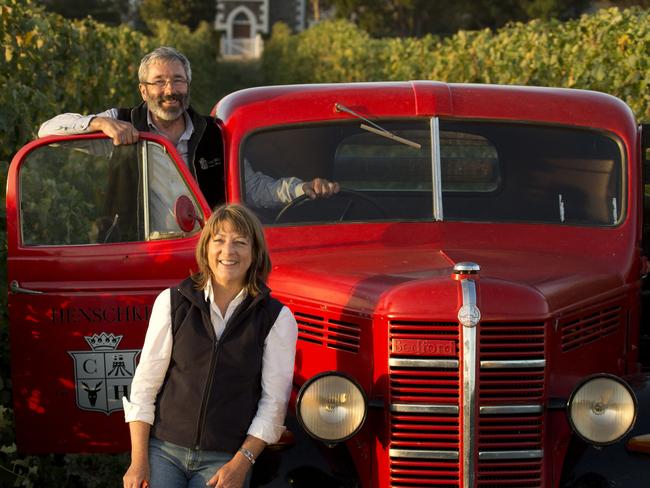
In terms of the attention it attracts on release, it’s matched only by Penfolds’ Grange, the two wines having long been considered the superstars of Australian shiraz. They are the two wines that resonate most with people beyond the wine trade bubble.
While peers in reputation and price, they’re very different propositions. Where Penfolds draws on vast vineyard resources to find the best South Australian shiraz fruit that suits the Grange style, Hill of Grace is the product of that single vineyard.
Grange is a great expression of a winemaking style, whereas Hill of Grace is a snapshot of a particular place. They are the two wines that make the country’s wizened wine media pack shake themselves from their stupor in the rush to publish judgment.
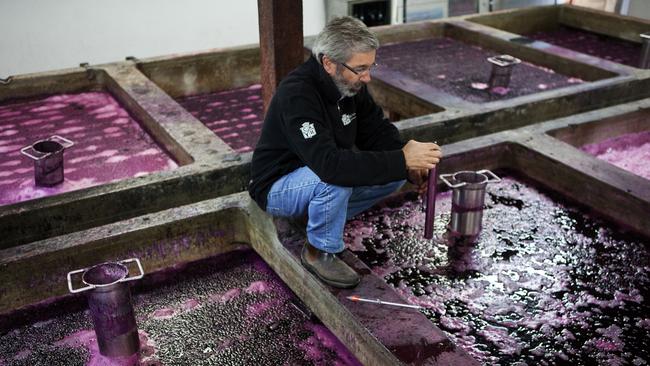
Both wines used be released in May, but now Grange is unveiled later in the year and that clear air allows for more careful consideration. In usual circumstances, Hill of Grace would be previewed, alongside a suite of other new Henschke releases, with the country’s wine media assembled in one place for tasting and discussion.
But in these restrained times I tasted through the wines while videoconferencing with the Henschkes. It’s a slightly strange way to do it, but one advantage was the opportunity to return to the opened bottles several times across a couple of days. Their evolution in that time was just as impressive as their first impressions.
Most of the attention, rightly, will be lavished on the Hill of Grace but there are strong showings across the board, and a few other highlights are featured here too.
GILES PINOT NOIR 2018
Adelaide Hills ($55)
Possibly the best pinot I’ve seen from the family’s Lenswood vineyard. Its beauty and evocative perfume are particularly poignant in light of the devastation wrought on the vineyard in the bushfire that tore through the Adelaide Hills in December last year.
The fire burned 90 per cent of the 25ha vineyard and destroyed sheds, vineyard trellising and irrigation infrastructure.

But while the true extent of the damage to the vines really won’t be known in the most severely burned blocks until next spring, there are already positive signs of regeneration in other sections of the vineyard.
“The grapevine’s a tough plant,” Prue Henschke says. “It’s pretty much a weed.” She also sees opportunity in the ashes, and is planning to reconfigure parts of the vineyard and plant more chardonnay and clones of pinot noir.
Her viticultural track record makes it easy to share her confidence that the vineyard will come back maybe even better than before. But for now we have this wine, the phoenix stretching its wings before it has to bury itself in the ashes and wait for resurrection. It is polished and pure, clean, with bright red berries, forest fruits, blood orange, some high musky notes, and a beautiful core of strawberries and spice. The palate is sinewy and taut; there’s a palpable tension at play. Fine, softly raspy tannins fan out through the finish.
MARBLE ANGEL CABERNET SAUVIGNON 2015
Barossa Valley ($75)
This is the third release of this label, the distinctive character of the cabernet sauvignon grown at this site at Light Pass demanding it be released as a single-vineyard wine.
The vineyard sits just below a quarry from which Stephen’s great-uncle, Julius Henschke, sourced the pristine white Angaston marble that he used in his celebrated stonemasonry.
There are aromas of kasundi and tapenade, heady violets, mustard seeds and bay leaves, dry gum leaf and snapped twig, with some roasting pan scrapings in there too.
The stonemasonry parallels are easily drawn.
It’s an intricately detailed wine — you see its structural lines so clearly — and it has a sense of transparency and space. Really fine, crushed sandstone tannins, gentle grit and grip.
HILL OF GRACE SHIRAZ 2015
Eden Valley ($865)
If asked to pinpoint one thing that makes this legendary vineyard so special, it is — for me at least — the quiet confidence and self-assuredness of the wines that it produces.
The signature of a great Hill of Grace is restrained hedonism. This is not a flashy, extravagant wine by any means, because it doesn’t have to make a big statement about its quality and ambition. It’s just all there, waiting for you to find it.
First impressions deliver fine red and black fruits, a compelling array of woody spices that present themselves in a rolling sequence across time.
A deeper acquaintance reveals aromas of an old fruit packing shed, the boxes and their contents, as well as preserved plums, cardamom pods and cocoa.
It’s beautifully composed, a steady footing, immaculate integration. Not a hair out of place. There is a really satisfying diaphanous sheath of fine tannin running through it.
Its layering and detail seems almost endless. Each time you go back to the glass, another nuance is revealed. It will live for years, a valuable reminder of the blessed year that produced it and the blighted one in which we first drank it.





